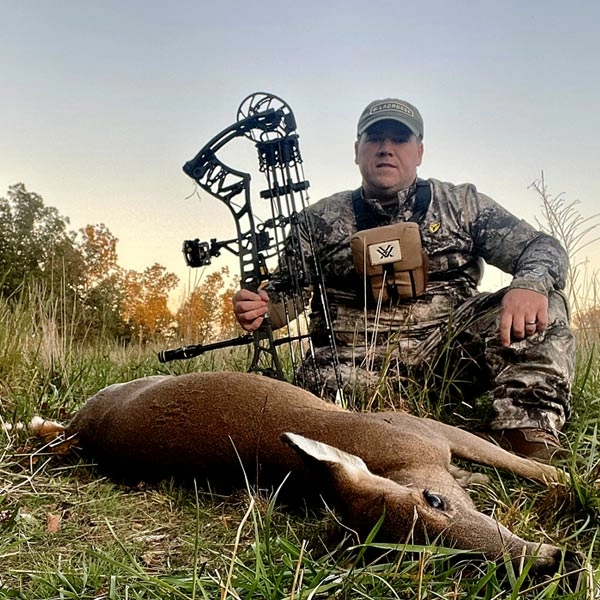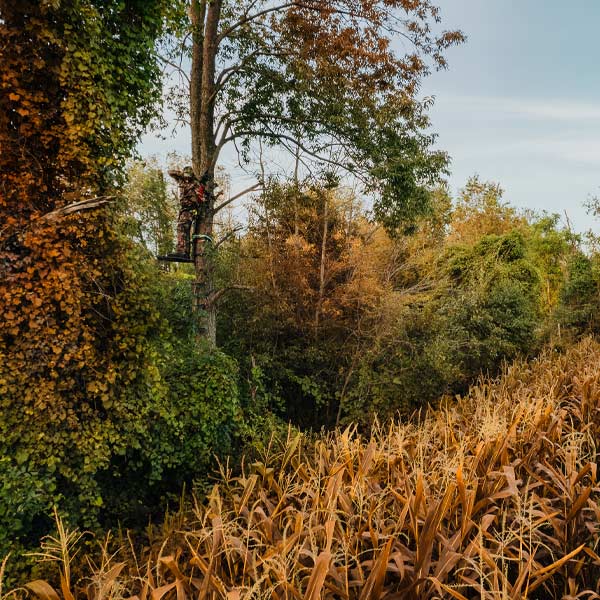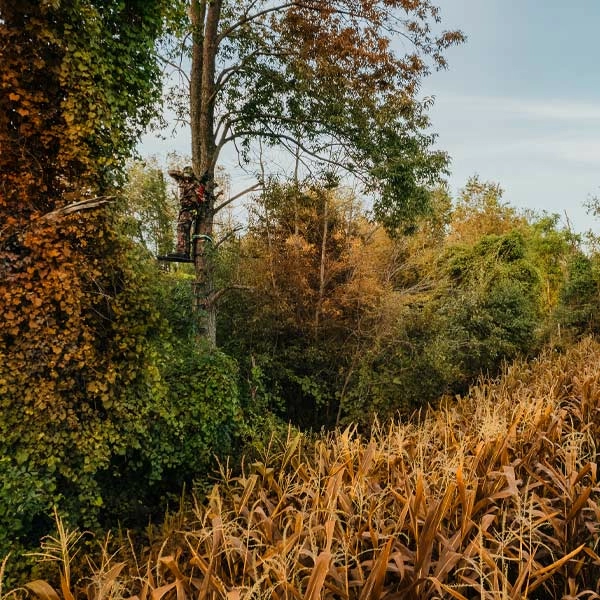
After filling my Missouri buck tag during the first week of October, I set my eyes on harvesting a few does for management purposes. On October 17th, 2021, I climbed into my ladder stand that overlooked a well-used food source in hopes of harvesting one of many mature does that had been regularly coming into the field to feed during the late evenings. At approximately 5:00 p.m., the first three entered the field. Trying not to rush the hunt, I picked up my Vortex binoculars and looked closer at the does. I aimed to harvest a mature doe that evening, so I used the binoculars to get a closer look, ensuring that the doe I picked was indeed mature.
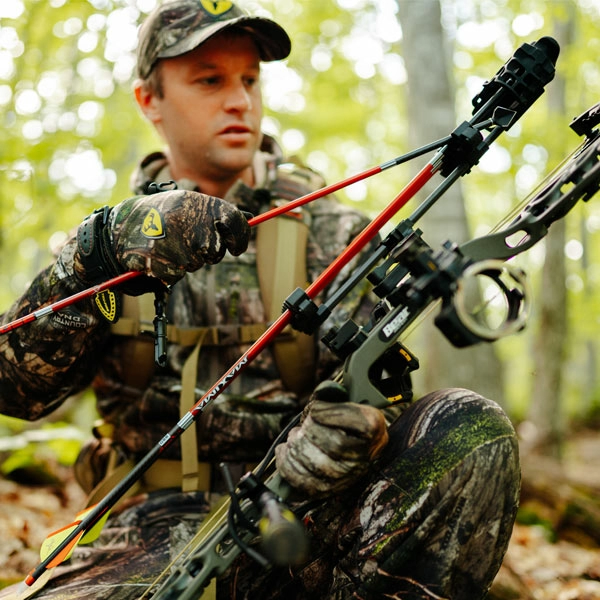
After twenty to thirty minutes of watching the does as they inched closer into bow range, the count had risen by seven more does and one two-year-old buck in the same field. Finally, one of the does I had sized-up earlier had made her way within twenty-five yards. With my left arm, I slowly pulled my Bear Archery Redemption EKO bow from the hanger slightly above my head. At this point – my adrenaline was pumping. My heart was beating like I had set my eyes on a mature buck. After a few deep breaths, I came to full draw, aimed, and squeezed the trigger on my release, sending an arrow through both lungs of the doe. After bolting out of the field, I watched as the hit doe made her way through a barbed wire fence, then out of sight. Luckily, after thirty minutes of waiting in the stand, I lowered down my Bear bow and proceeded to follow a blood trail. After a few minutes of tracking blood, I was relieved to find blood headed back toward the field edge. Once I found my doe, I returned to my truck and drove within inches of her, making for easy transport back home.
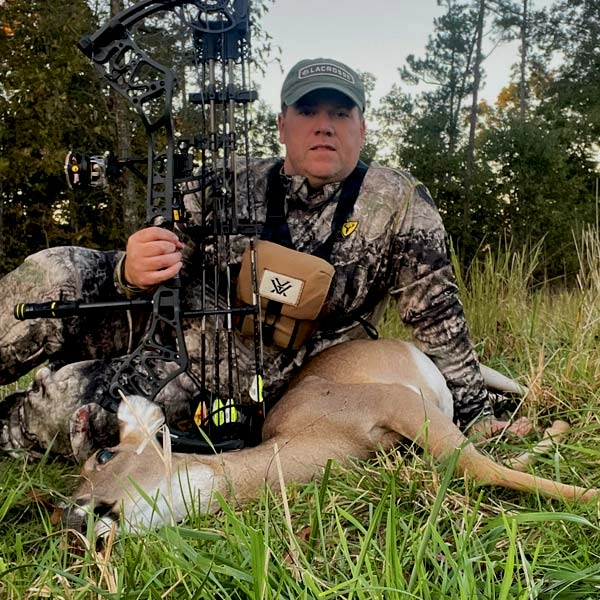
There are many debates on how many does should be taken from a hunting property and what the proper buck-to-doe ratio is for producing better quality hunting. In my research, I have concluded that the best ratio is two does per every buck. Studies have shown that to manage the best buck-to-doe ratio, each year, a hunter must harvest one doe per every hundred acres once their desired ratio has been reached.
Why Harvest Does Early
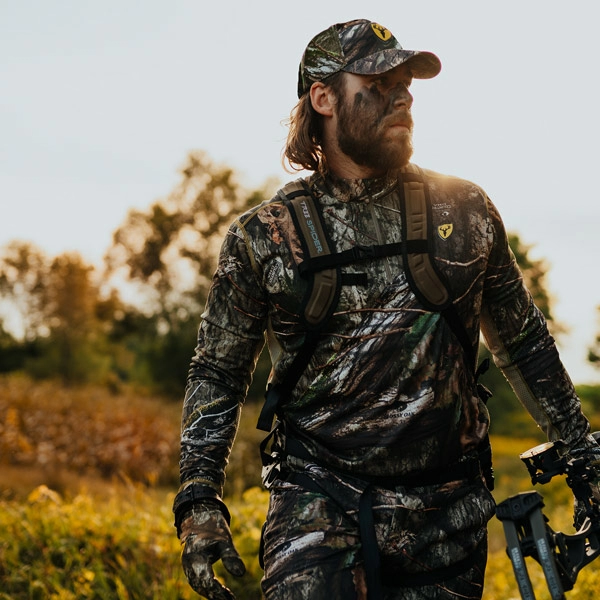
In my opinion, taking does before the pre-rut activity begins is the ideal time to harvest does.
One of the main factors in my decision to harvest does earlier in the season is due to fawns already being weaned from their mothers, and mature does have not yet been bred for the following year. The risk of taking a doe still nurturing fawns is gone, and the chance of harvesting a doe pregnant with potential deer for the next year is out of the equation.
It is vital to only harvest mature does when practicing management efforts. As with my hunt, using binoculars can help identify them. Many hunters have made the mistake of shooting button bucks that resemble a mature doe. By being patient and taking a closer look before deciding to make the harvest, hunters can ensure they are harvesting the right deer.
Better Rut Activity
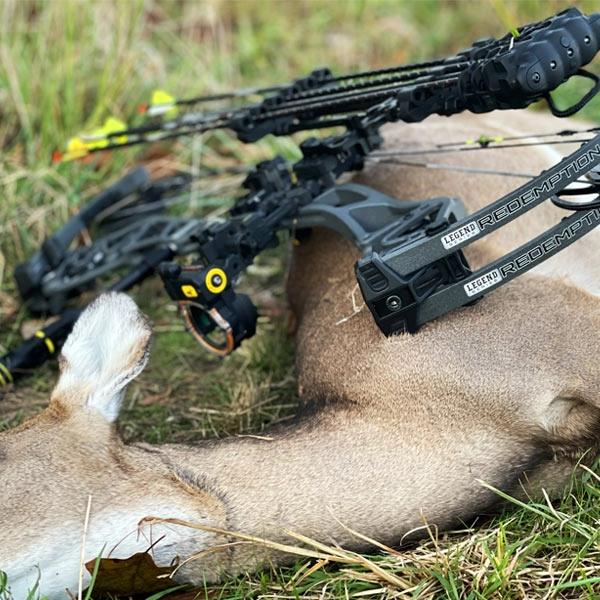
One of the leading debated issues among deer hunters who are managing deer for better hunting is how many does should be taken. As mentioned, the desired ratio should be two does per every buck. If there are too many does on a property, the quality of the rut decreases.
At first, hunters often think that the more does they have, the more bucks will come to breed. However, that is not necessarily the case. One of the most exciting factors about hunting during the rut is the uncertainty of what bucks may show that have never been seen before the rut.
Unidentified bucks often make their presence known during the rut because of their need to seek does. Bucks have been known to travel several miles from their home range in pursuit of a hot doe, thus being the reason hunters often encounter bucks they have never seen before the rut.
Many factors influence how far a buck will travel during the rut. Food and natural habitat are factors, yet how many does are in their home range is another powerful dynamic for distance traveled. Bucks typically won’t travel far during the rut if an area has a high doe-to-buck ratio because they don’t have to move far to find another doe to breed. A more balanced ratio must be intact to get bucks up on their feet and to travel when the rut has begun. A lower doe-to-buck ratio can drive bucks that live in the area to get on their feet and move.
Harvesting a few does earlier in the season increases the competition bucks encounter when the rut begins. When bucks have to make an effort to find a doe instead of finding one everywhere they turn, the more excitement hunters will have when hunting during the fall.
